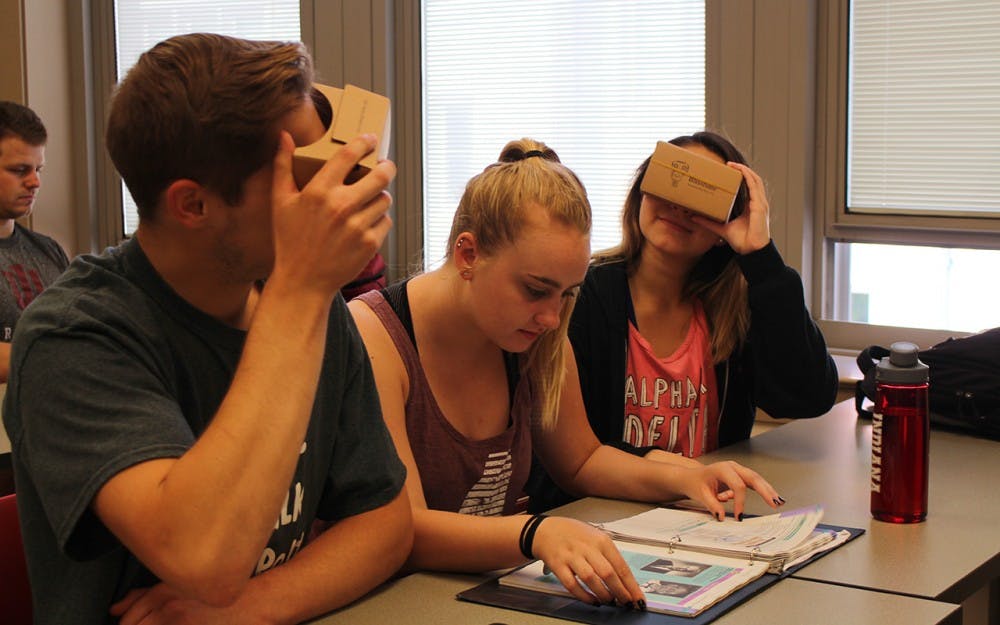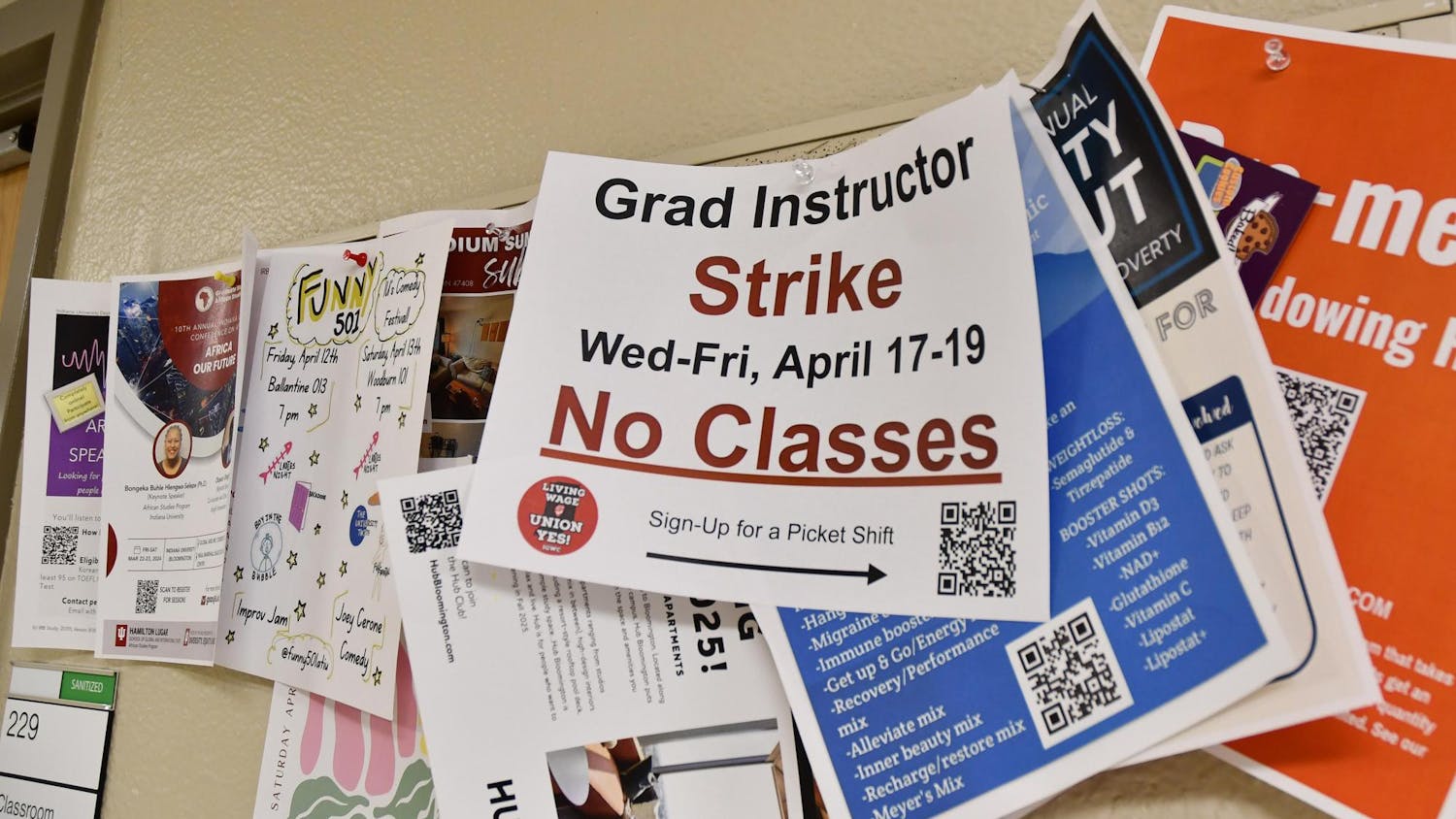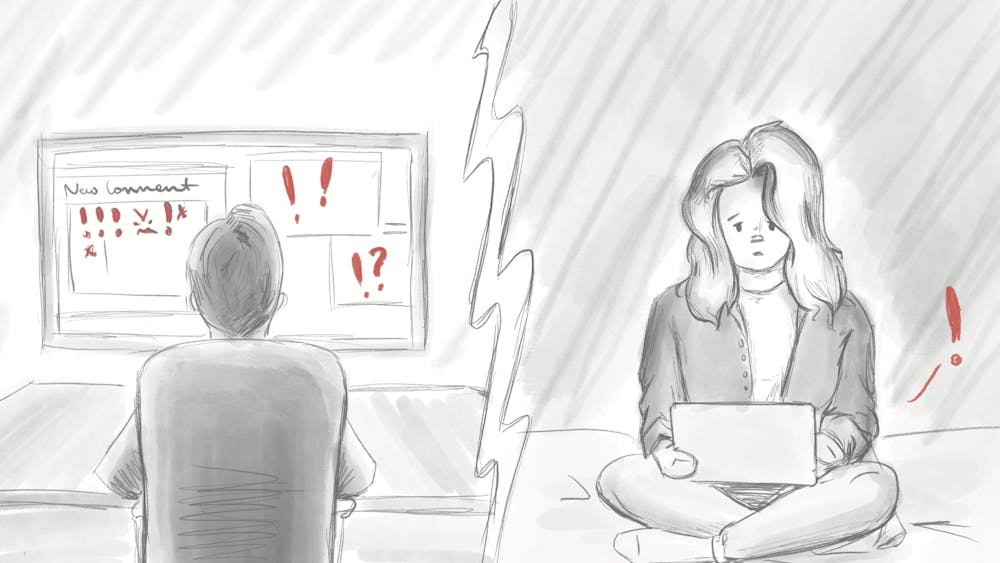Although foreign languages are typically taught so students can immerse themselves in another culture, they’re rarely taught through cultural immersion.
Olga Scrivner and Julie Madewell, lecturers in the Spanish and Portuguese Department, and Nitocris Perez, an emerging technology specialist for University Information Technology Services, received a grant for virtual reality technologies that enhance language learning.
Through their work on the project, which brings $7 Google Cardboard viewers into the classroom, they hope to enhance the foreign language departments by making virtual reality technology a more common part of the language learning experience.
“We’re helping our students connect and try to find some own personal meaning by discovering other places but not necessarily leaving the classroom because not everyone can study abroad,” Madewell said.
The Google Cardboard viewers are binocular-like structures made of cardboard with a lens for each eye. Students place their phone in the apparatus and view the virtual reality through apps on their phone.
The apps students download onto their phone are Cardboard and Google Street View. Cardboard is an app by Google created to work with the viewers, and Google Street View allow students to view the streets of another country as if they were there.
While looking through the viewers, students can look in any direction and it appears just like they’re there. Students can even “walk” down the sidewalk by clicking a button on the camera, which leads their vision in another direction.
Madewell said one benefit of this technology is using the teaching method think, pair, share.
With this method, Madewell said students are more willing to speak in front of the class because they’ve had time to process what they learned, which makes them more confident.
“When you do individual learning, you can have your own speed,” Scrivner said. “You can have your own control. Having control in your own learning is important.”
As the project develops, Scrivner would like to expand the materials available to students by taking cameras that film 360 degrees to other countries and filming events that take place, such as people speaking in a market or boat rides touring the country.
The first segment of the project will be filming the chefs while they prepare food in Puerto Rico, Mexico and other countries.
“It will be related to the food vocabulary, but also getting some culture in there,” Madewell said. “You’ll be able to be in their kitchen.”
Perez said the viewers create context for students, so the idea of being in a different country isn’t only theoretical. Instead, the virtual experience helps their brains understand the language as if they’re in the country.
“The idea is to try to make this experience more real, to bring experiential learning into a classroom that traditionally uses textbooks,” Perez said.
Freshman Kurt Simpson, who’s in Scrivner’s Spanish class, said the technology makes class more exciting than a typical language course.
“I just love the class because we’ve gotten to study so much more than just vocab and grammar,” he said. “We study a lot of culture in Latino countries.”
Simpson said the class is beneficial because the virtual reality he’s able to experience with the cardboard viewers will help prepare him for studying abroad, something he plans to do in the future.
Scrivner and Madewell have used augmented reality in their classes before. This encouraged students to engage more with their studies and classmates, Scrivner said. They used Aurasma, an interactive app, to do so.
Aurasma, which is paired with the students’ textbooks and allows them to engage in augmented reality by scanning images in their textbooks and provides them with videos of relevant vocabulary, grammar or conversations.
“There are a lot of layers to this and a lot of things we’re looking at and playing with in trying to figure out what is the best practice for language education,” Madewell said.






